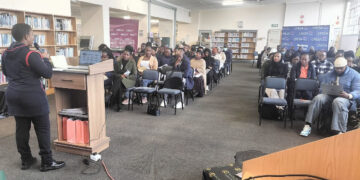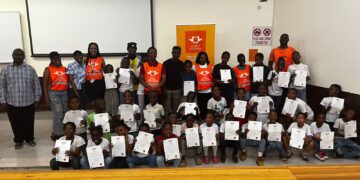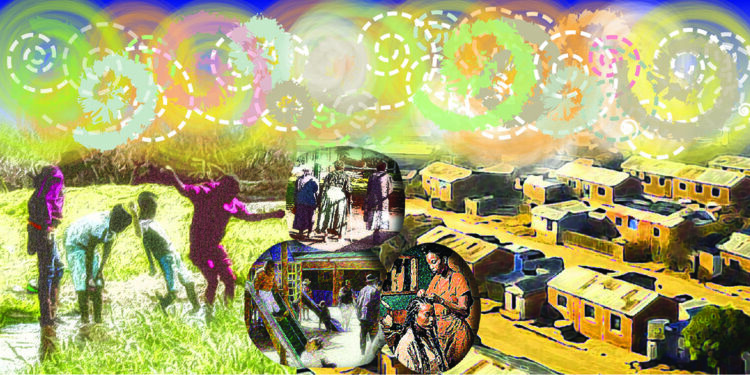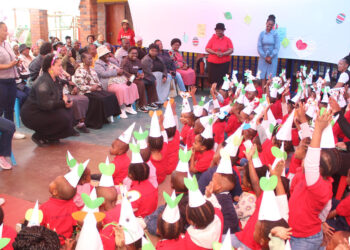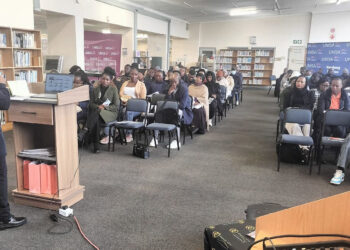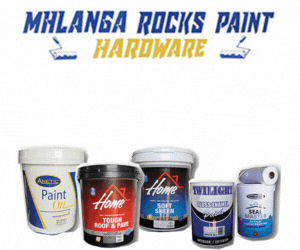The state of the environment significantly impacts our daily lives, particularly the air we breathe, which directly influences how we interact with our surroundings. From simple allergies to regular smoke inhalation, and even carbon emissions from industrial areas in urban settings, various pollutants, including dust particles containing harmful elements, contaminate the atmosphere, often affecting the health of community members without their knowledge. While ignorance may seem blissful, in this context, it can be hazardous or even fatal.
We live in a time when climate change is no longer just a phenomenon but a reality we must confront. The effects of climate change, such as rising temperatures and increased flooding, have caused significant disruption, displacing people from their homes across the country. In Gauteng, particularly in Johannesburg, Soweto, and parts of the West Rand, historical factors have influenced the air quality in these areas.
The environmental monitoring of airborne toxins remains a pressing concern in neighbourhoods like Braamfischerville, Thulani, and Snake Park. Residents in these areas have reported chest and skin infections due to exposure to particles like lead, mercury, and arsenic. Section 24 of the Constitution guarantees everyone the right to an environment that is not harmful to their health or well-being, and to have the environment protected through reasonable legislative measures that prevent pollution, promote conservation, and ensure sustainable development.
Municipal authorities play a crucial role in air quality governance by enforcing by-laws within their jurisdiction. They may also appoint an Emission Control Officer to implement measures to minimize emissions.
Ward 44 Councillor Velaphi Tefo, with experience in environmental management, highlighted several issues contributing to worsening air pollution. He noted that companies involved in mining operations often abandon their responsibilities to rehabilitate mine dumps, leaving areas like Sol Plaatjie vulnerable to environmental degradation. The open-cast mining of gold, uranium, silver, and sandstone has negatively impacted many areas around Roodepoort, leading to health complaints from residents, including stomach aches, eye discomfort, skin irritations, and chest pains.
A common measure of air pollution is based on the concentration of heavy particles in the atmosphere, measured as “density of particles larger than 10 microns in width, measured in microgrammes per metre squared”, usually written as PM10. The table below show’s how the US Environmental Protection Agency rates danger to health based on the PM10 measurement, with anything over 155microgrammes/m2 considered unhealthy.
Chart one shows data from an air quality station in Soweto. In wet summer months the PM10 level can be in the low 20s, but this soars in dry, windy winter months. The average PM10 for June, for example, is 126mg/m2. But the average only tells part of the story – over a three year period measured, there were 35 days when the PM10 level exceeded 200.
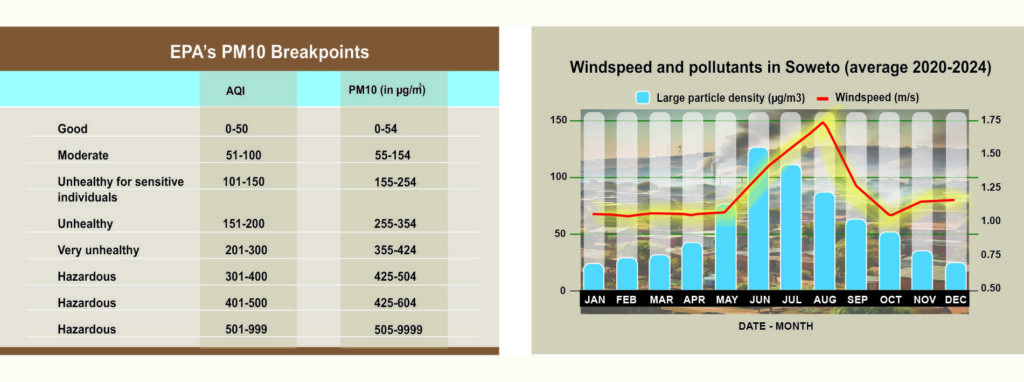
Taking a look at these discoveries however, there is potential for positive change once land rehabilitation is completed, allowing for projects like farming and housing development. Currently, many residents live near or on mine dumps, and the dust is so pervasive that they cannot open their windows during windy weather.
Tefo also mentioned that officials from the City of Johannesburg, including the Public Protector’s office, have conducted environmental assessments in Region C, revealing concerning results. Human rights are fundamental to safe living, and any environmental threats must be promptly addressed. The municipality faces the challenge of balancing public safety with the need to support entrepreneurship, as some businesses contribute to air pollution. Informal traders, those who burn waste, and illegal dumping exacerbate the problem, leading to blocked sewage systems, increased flooding, and exposure to harmful chemicals. The abundance of dirt roads in Braamfischerville further contributes to the dust pollution.
To address these issues, Tefo’s office has implemented educational initiatives to help residents reduce environmental toxins. These include distributing pamphlets, making media announcements, and providing a hotline for anonymous reporting of illegal activities. As urban populations grow and congestion increases, public health risks also rise. Fortunately, the City of Johannesburg has approved efforts to enforce municipal environmental by-laws.
Dr. Vusi Nkosi of the South African Medical Research Council conducted a study on unrehabilitated mine dumps, identifying them as a significant source of wind-blown dust containing toxic metals like lead. Lead exposure is linked to adverse health effects, particularly in children, affecting neurocognitive and behavioural development. Communities near gold mine dumps are at increased risk of lead exposure. A before-and-after intervention study in Soweto’s Snake Park aims to evaluate the impact of educational and domestic hygiene interventions on indoor dust lead levels. If effective, the study will inform the development of an awareness campaign to reduce lead exposure in communities near mine dumps. Some mining companies like Harmony Gold, which has successfully planted and grown grass on the side slopes of the tailings facilities to contain dust, have demonstrated their commitment to caring for not only the environment, but also communities surrounding its operations.
In conclusion, the National Department of Environmental Affairs (DEA) is responsible for environmental and air quality management, providing national norms and standards to ensure coordinated, integrated, and cohesive governance in this area.
This article was supported with funding and research by OpenUp and Africa Data Hub, https://africadatahub.org
Jerry Sokhupe
Soweto Sunrise News





